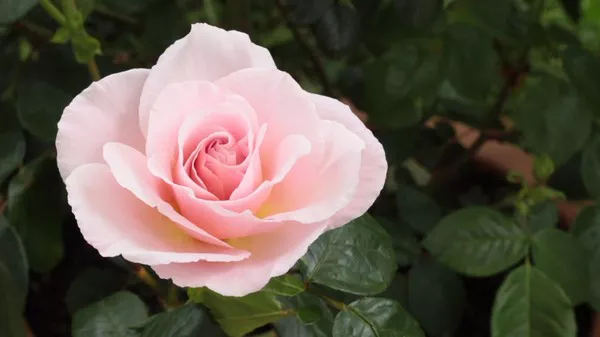Beauty is a concept that transcends time and culture, and throughout history, humans have sought to define and celebrate it in various forms. Flowers, with their captivating colors, intricate patterns, and delightful fragrances, have consistently been considered one of nature’s most beautiful creations. In this article, we embark on a journey to discover what is considered the most beautiful flower, exploring the criteria that define floral beauty, cultural perspectives on flower aesthetics, and the symbolic significance of these enchanting blooms.
Defining Floral Beauty
Beauty is a subjective and multifaceted notion, and the perception of what constitutes the most beautiful flower can vary widely from person to person. However, certain characteristics often contribute to the allure of a flower:
Color: Vibrant and harmonious colors play a significant role in attracting the human eye and evoking emotions. Flowers with striking color combinations or unique hues often captivate observers.
Shape and Form: The intricate and balanced structure of a flower’s petals and overall shape can greatly impact its aesthetic appeal. Symmetry, asymmetry, and graceful curves all contribute to the overall impression of beauty.
Fragrance: A delightful fragrance can elevate a flower’s charm, appealing to our sense of smell and creating a multi-sensory experience.
Rarity: Rare or exotic flowers often hold a special allure due to their scarcity and uniqueness, making them highly sought after and revered.
Cultural Significance: Flowers that hold cultural or historical significance may be regarded as especially beautiful due to the stories and traditions associated with them.
1. The Timeless Elegance of the Rose
The Rose’s Reign: Among the vast array of flowers, the rose reigns as a timeless symbol of beauty. With its lush petals, velvety texture, and captivating fragrance, the rose has captivated humans for centuries. The rose’s association with love, passion, and romance further enhances its allure, making it a universally cherished flower.
2. The Magnificent Orchid
The Orchid’s Allure: Widely regarded as one of the world’s most diverse and captivating flower families, orchids have earned their place among the most beautiful flowers. With over 25,000 species, orchids exhibit an astonishing variety of shapes, colors, and patterns. From the elegant Phalaenopsis to the dramatic Cattleya, each orchid showcases a unique charm that has captivated enthusiasts and collectors alike.
3. Cultural Perspectives on Floral Aesthetics
Asian Aesthetics: In Asian cultures, flowers hold profound symbolic meaning and are often featured in traditional art, literature, and ceremonies. Cherry blossoms in Japan, lotus flowers in China and India, and the peony in various Asian countries exemplify the region’s appreciation for floral beauty.
Middle Eastern Aesthetics: The Middle East is home to the enchanting desert rose, known for its striking appearance and ability to thrive in arid conditions. The delicate and intricate design of the desert rose exemplifies the region’s admiration for beauty in the harshest of environments.
European Aesthetics: Europe boasts a rich history of flower appreciation, with gardens and floral art dating back to ancient times. The tulip, beloved in the Netherlands during the Dutch Golden Age, and the English rose, celebrated in British literature and gardens, exemplify Europe’s floral fascination.
South American Aesthetics: South America is home to numerous breathtaking flowers, such as the vibrant orchids and passionflowers. These exotic blooms are treasured for their vivid colors and unique forms, reflecting the continent’s rich biodiversity.
Beyond the Visual: Flowers and Symbolism
Spiritual and Cultural Symbolism: Flowers have played a significant role in religious and cultural practices worldwide. The lotus flower, revered in Buddhism, represents purity and enlightenment. In Christianity, the Easter lily symbolizes resurrection and renewal. Understanding the symbolic significance of flowers adds depth to their beauty and cultural relevance.
Preserving Beauty: The Art of Flower Preservation
Capturing Fleeting Beauty: Flowers’ ephemeral nature makes them a fleeting pleasure, but preservation techniques allow us to capture their beauty for longer. Techniques such as pressing, drying, and resin embedding preserve flowers, retaining their form and colors as cherished keepsakes or decorative art pieces.
Conclusion
The quest to determine the world’s most beautiful flower is an unending and subjective exploration, with each individual finding allure in different blooms. Beauty lies in the eye of the beholder, and the diverse criteria of color, shape, fragrance, rarity, and cultural significance contribute to the admiration of floral aesthetics. Whether it is the timeless elegance of the rose, the exotic allure of orchids, or the enigmatic nature of the corpse flower, flowers continue to be celebrated as nature’s masterpieces, inspiring art, literature, and cultural practices throughout human history. The appreciation of floral beauty not only enriches our lives aesthetically but also connects us to the natural world, reminding us of the marvels that surround us every day.


